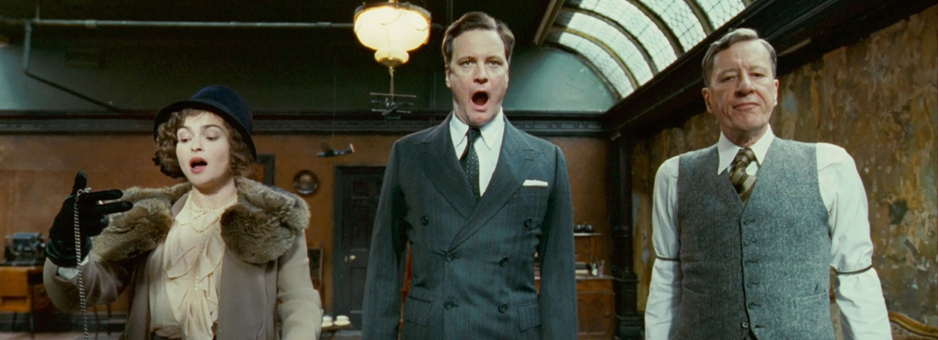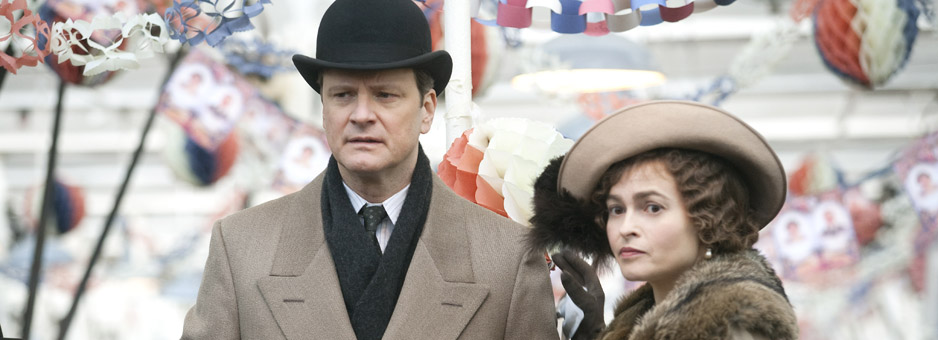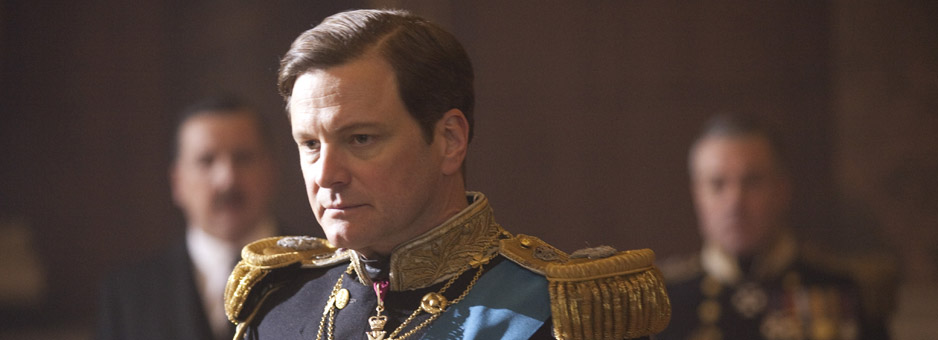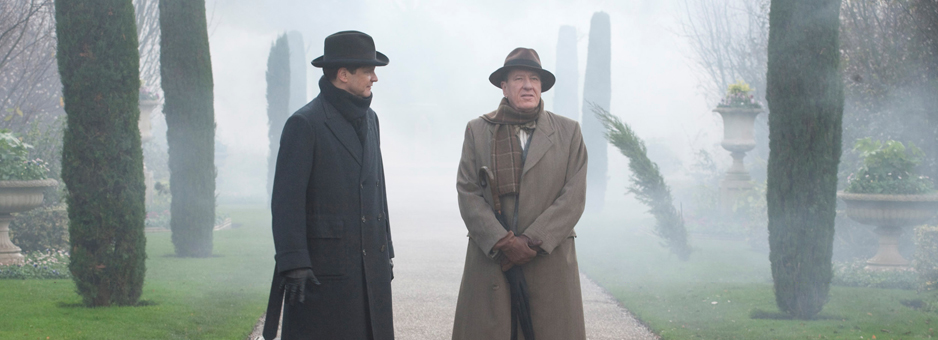- Panzehir
- Double Xposure
- Ram-Leela
- Ilo Ilo
- Elysium
- Welcome to the Punch
- Pacific Rim
- Bad Parents
- Archive




The King's Speech
Molinare DI Colourist Gareth Spensley uses Baselight to help Tom Hooper perfect the details of a modern classic
The King's Speech, this year's winner of the Academy Award for Best Picture, went through final DI grading on Baselight at the post house Molinare in London. The project reunited DI colourist Gareth Spensley and Director Tom Hooper (the Oscar winner for Best Director) who had previously collaborated on The Damned United. Spensley had also previously worked with Director of Photography Danny Cohen (a nominee for Best Cinematography) on This Is England.
The King's Speech tells the story of the surprising ascent of George VI (played by Colin Firth, the Oscar winner for Best Actor) to the English throne and his courageous effort to overcome an acute problem with stammering. The contemporaneous rise of Hitler in Germany looms in the background of the narrative and the sense of anxiety this provokes among the British people is addressed by George in a momentous radio speech that he gives with the aid of working class Australian speech therapist Lionel Logue (played by Best Supporting Actor nominee Geoffrey Rush).
Spensley recalls sensing that The King's Speech was going to be a special film project the moment he heard Hooper describe the premise. "I thought, 'The King had a stutter and had to overcome it? This story has never been told? No one knows it?' I was genuinely astounded," Spensley says. "I thought it sounded fantastic."
Molinare was a co-producer of the film and provided virtually all of the picture post production services. That included hosting the editorial team, producing the visual effects, performing DI grading and editorial finishing, recording the final 35mm master, and producing all of the digital deliverables including the digital cinema prints.
Hooper and Cohen shot the film on 35mm film (Fuji Eterna Vivid 500T film stock) and, following editorial, select scenes were scanned on Molinare's Northlight scanner at 2K and conformed in Baselight. Spensley performed much of the grading work in a DI theatre equipped with a 2K projector and a 10-foot wide screen. However, during the final stages of the process, Spensley moved into a new, purpose-built grading theatre at Molinare, that, boasting a 30-foot projection screen, is the largest in Europe.
The film draws much of its emotional force from the culture clash encounter between George and Logue. Early on in the grading process Hooper and Spensley concluded that the differences between the two worlds should not be portrayed too severely, but rather underplayed. "Tom didn't want an England that was all glorious colours," notes Spensley. "For instance, London in the 1930s was full of factories spewing smog and he wanted that to come across. Also, there was a lot of cutting between Geoffrey's working class world and the palaces and country mansions of Bertie's (George's) world. Nobody wanted that to jar, but instead to become increasingly intertwined. Let the narrative provide the flow. We didn't want the pictures to become obviously glorious every time you see a palace."
In fact, Spensley adds, there was an effort to use the grade to show that the royal life was not as grand as it might superficially appear. Through the short reign and abdication of George VI's brother, Edward VIII, the monarchy suffered a diminution of its reputation and confidence. Hooper wanted to indicate that, subtly, through the look of the film. "At one point, there was a big tracking shot down a staircase and I came in one morning and started cleaning up the cracks in the wall," Spensley recalls. "When Tom arrived, he said, 'Whoa, what are you doing? I love the cracks. They're brilliant!'"
As George's own confidence grows over the course of the film, it suggests that the monarchy itself is regaining its self esteem and moral courage. That emotional tilt is reflected in a change in the grade. The process culminates in the film's climactic scene where George strides purposely through the palace to give his radio address to the British people. "We brought in colour and contrast progressively through the film so that when we arrive at that scene in Buckingham Palace, you can really feel the grandeur of his surroundings," Spensley observes.
Much of the visual effects work for the film involved removing modern buildings and other contemporary features visible in the background of shots. Molinare's visual effects department performed much of this work, but a significant number of visual effects were created or enhanced by Spensley in Baselight. The colourist cites the example of the Regent's Park scene, where George and Logue have a heated confrontation, which required an alteration of the London skyline and the addition of layers of mist and fog characteristic of the city in the 1930s.
"They used smoke machines when they were filming but it was not enough to fill the park," Spensley recalls. "A Shake artist roto-ed the actors from the scene and we used the resulting mattes to grade the backgrounds, adding smoke and mist at different depths to create the illusion of smog. Two of the shots were long Steadicam moves and these took a long time to perfect."
As many scenes in the film represented well documented historic events, there was a particular emphasis on getting the details right. Spensley notes that Molinare had a thick book of reference materials that included historic photos of actual scenes reproduced in the film.
Perhaps the most famous historic scene in the film was the coronation of George VI in Westminster Abbey. In that instance, the filmmakers were not content to merely reproduce the events; actual newsreel footage was included in the film. "In the scene where Firth watches his coronation back on newsreel it is actually the archive from the genuine coronation," Spensley explains. "When you see the back of the Archbishop placing a crown on the King's head, you sort of assume that it is Colin Firth and Derek Jacobi. In that case, the film informs the real version."
Spensley observes that much of the time in the grading sessions was devoted to refining details. They worked, not simply to make the pictures look more beautiful, but also to affect the mood of scenes and advance story points. "Tom was in more or less all the time directing the sessions and asking for small adjustments," Spensley states. "For one of the scenes in Westminster Abbey, I recall him asking to move a window and we did it then and there in the Baselight."
"Baselight is a great piece of kit for doing those types of things," Spensley adds. "It's not just a great colouring tool but it's also strong in those crossover moments where you are no longer just grading, you're picture finishing and polishing. You're doing a bit of visual effects, a bit of smoothing, a bit of compositing. In one instance Tom wanted to experiment with the composition of the view outside the Prime Minister's office in a green screened window. We simply imported the various layers into Baselight so that we were able to move them around until Tom was happy. We could experiment rather than request endless versions from visual effects with the background moved '20-percent to the right' or 'up a bit'. We could do it live and watch the scene, and Tom could see the dramatic implications. Working on Baselight isn't just about grading and colouring a film anymore."
Spensley cites an example of this in a shilling piece that George gives to Logue in payment for his services. The shilling takes on great symbolic value (of George's submission to his teacher, Logue) and Hooper wanted to be sure that it was not missed. "We used about a million tracking markers to follow the coin around the screen, putting just the right amount of light on it so that you know that it's there," he says. "It gets put down on a sofa and it has its own highlight, later it appears at Lionel's house and it gets just the right amount of glint as it passes through the frame. Tom is very much a details man."
Spensley spent several weeks working with Hooper at his side perfecting such details. "This was a film that Molinare, as a company, knew was going to be special and so we put time and love into everything they wanted us to do," he concludes. "We take great pride in its success."



